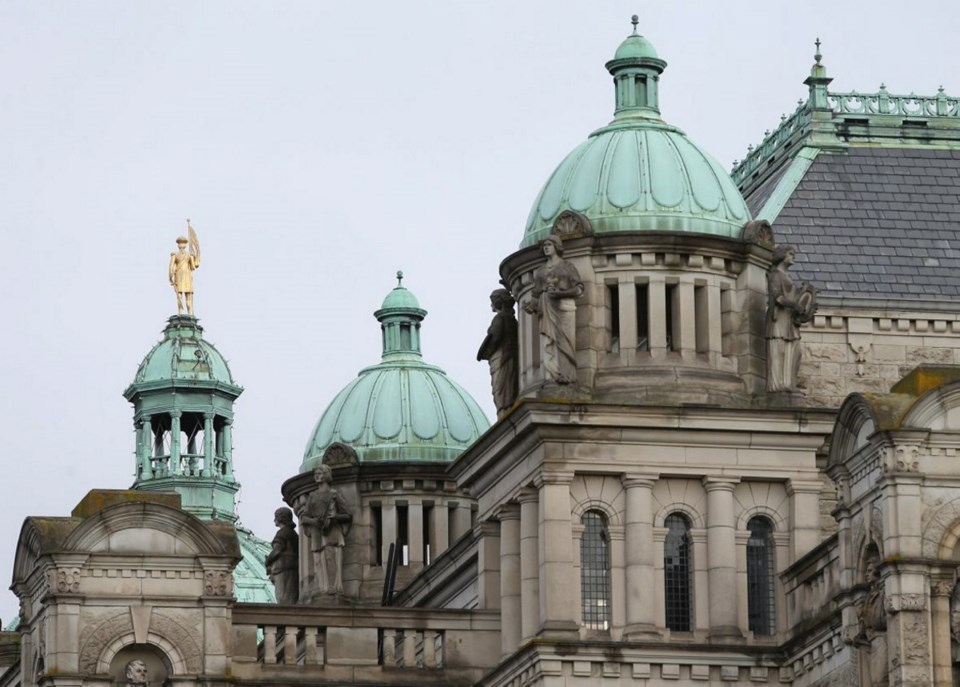 Let’s say you want to reinvent the game of hockey. You want to make it “fairer,” but in the back of your mind is the fact that your team doesn’t win as much as you think it should. The trick is to present the impression of a democratic study of the exciting changes you want to put to a vote, while maintaining control of the process for as long as possible, to get what you want.
Let’s say you want to reinvent the game of hockey. You want to make it “fairer,” but in the back of your mind is the fact that your team doesn’t win as much as you think it should. The trick is to present the impression of a democratic study of the exciting changes you want to put to a vote, while maintaining control of the process for as long as possible, to get what you want.
That’s roughly comparable to what the NDP government is doing with this fall’s referendum on changing the voting system to proportional representation. It’s a referendum, so it looks fair and democratic. But the nuts and bolts are assembled to get the result they want.
The fixes are in, and single biggest fix is the remarkable decision to leave all the decision-making power in the hands of the politicians, rather than the voters.
It’s an ongoing apparent conflict of interest, in the broad sense of the phrase. The political fortunes of the parties that MLAs represent are directly tied to what option is put to a vote. So are the politicians’ livelihoods, to some extent. The self-interest is obvious, but NDP cabinet ministers, in consultation with the Green caucus, still have all the power to craft the referendum process as they see fit.
The whole exercise should have been handed directly to voters from the start. Instead, the NDP promised: “We’ll hold a referendum on changing our voting system to a proportional system, so that every vote counts. We’ll ensure B.C.’s regions are all represented fairly. And we will campaign for the yes side.”
The inherent clash of interests was obvious from the start, and it’s only gotten worse.
Attorney General David Eby made a weak effort to deal with the problem by suddenly declaring that he was “neutral” and would recuse himself from cabinet discussions. Absurd.
He also took some crucial issues off the table, saying the rules for counting the referendum ballots were “hard-wired.” Setting the approval threshold at 50 per cent plus one should have been debated, but it’s arbitrarily set in stone. And goodbye to the idea of fair regional treatment. Ballots will all be counted in one batch, so Metro Vancouver will massively outweigh the regions.
All that voters can do is sit in front of their screens filling in the online consultation questionnaire (88,500 done to date), while they wait for the impartial attorney general to divulge what the referendum will look like.
The B.C. NDP submitted a brief in February urging Eby not to include specific types of voting systems on the ballot, to keep things simple. The NDP and Green caucuses also wrote a joint submission warning against mentioning specific systems. If Eby listens to his own team, the referendum will be as opaque as possible.
The one thing the B.C. Liberals got right when they thought about tinkering with the system 15 years ago was cutting politicians out of the project. They created a citizens’ assembly of 161 random people from all over B.C., then sat back and let it happen. The resulting option foundered (twice) on the problem of complexity. But that wasn’t the assembly’s fault; it’s the central problem of any electoral-reform initiative.
Saanich and Victoria provided another good example last week. The jurisdictions are studying amalgamation, not the voting system. But there are enough implications for local politicians that they plan to step aside from the process. If voters this fall say they want further work done, the jurisdictions will convene a citizens’ assembly, as did the Cowichan Valley earlier.
But the NDP cabinet is going to carry on getting what it wants — a referendum result in favour of changing to proportional representation. And they’re doing so fairly quietly. The legislation was passed last fall, public comment was collected online last winter, and news since then has been scant.
The plan is to present a major report in the near future and then pop the question(s) in the fall, just a couple of months before the referendum. Premier John Horgan briefed reporters last week and said there’s lots of time left.
He can afford to be relaxed about it, because the table has been tilted. And from the NDP-Green point of view, the less time the referendum is exposed to inquisitive voters, the better.



